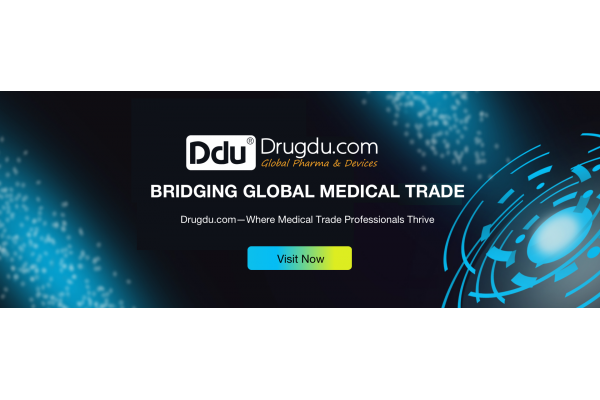【EXPERT Q&A】What qualifications are required for the export of cosmetic raw materials?
April 7, 2025
Source: drugdu
 233
233
Drugdu.com expert's response:
Depending on the target market, exporting cosmetic ingredients requires compliance with China's export qualifications, import regulations of the target country, and international certification standards. Below are the specific requirements:
I. China's Export Qualification Requirements
1. Enterprise Qualification Registration
Customs Registration: Complete the Registration for Foreign Trade Operators and obtain the registration certificate.
Business License: The scope of business must include "import/export of goods" or "import/export of technology," and a copy of the license must be provided.
Tax Compliance: Submit the tax registration certificate (if the three certificates have been integrated, it is included in the business license).
Foreign Exchange and Tax Rebates: Complete the procedures for opening a foreign exchange account and registering for export tax rebates (if applicable).
2. Product Compliance Documents
Material Safety Data Sheet (MSDS): Outline the physical and chemical properties, toxicity, first aid measures, etc., of the ingredients.
Component Analysis Report: Issued by a qualified laboratory to certify the compliance of ingredients and their content.
Quality Certificate: Issued by the manufacturer to confirm compliance with national or industry standards.
Special Qualifications: Some ingredients require a hygiene license or export license (e.g., a transport certificate is required for hazardous materials).
3. Trade Documents
Contract, Invoice, Packing List, Bill of Lading: Clearly state transaction information and logistics details.
Certificate of Origin: Used to enjoy tariff preferences (e.g., Generalized System of Preferences certificate).
Inspection and Quarantine Certificate: Issued by a domestic agency to certify health and safety standards as required by the target country.
II. Import Regulations of Target Countries/Regions
1. EU Market
Regulatory Compliance: Comply with EU Cosmetics Regulation EC 1223/2009 and its amendments (updated in 2025), restricting substances such as genistein and daidzein, and banning specific nanomaterials (e.g., styrene/acrylate copolymer nanomaterials).
Safety Report: Submit a product safety report through the EU Cosmetic Notification Portal (CPNP).
Certification Requirements: CE certification (mandatory), CPNP pre-registration, and possibly ISO 22716 (GMP) or organic certification (e.g., COSMOS).
2. US Market
FDA Registration: Enterprises must register, and products must be listed for record (FDA product listing registration).
Ingredient Restrictions: Prohibit the use of substances such as bithionol and vinyl chloride. Sunscreens must comply with OTC monograph requirements, and colorants must be approved or certified by the FDA.
Labeling Compliance: Label ingredients in accordance with the Fair Packaging and Labeling Act (FPLA) and comply with FDA labeling regulations.
3. Southeast Asian Market (e.g., Indonesia, Malaysia)
Enterprise Qualifications: Require a local business license, import/export operation rights, and customs registration.
Product Registration: Some countries require registration with the drug administration or a hygiene license (e.g., Indonesia's MOH certification).
Halal Certification: Required for Muslim markets.
Labeling Requirements: Provide labels in Chinese or the local language, stating ingredients, production date, etc.
III. International Certification Standards (Enhancing Market Access)
1. Production Standard Certification
ISO 22716: Good Manufacturing Practice (GMP) certification for cosmetics.
GMPC: Certification for hygiene and quality in the production process.
2. Organic and Environmental Certification
EU Organic Certification, USDA Organic Certification (applicable to organic ingredients).
Cruelty-free Certification: No animal testing (e.g., Leaping Bunny).
3. Religious Certification
Halal Certification (Muslim markets), Kosher Certification (Jewish markets).
4. Chemical Compliance Certification
REACH Certification (Registration, Evaluation, Authorization, and Restriction of Chemicals in the EU).
IV. Export Procedure Summary
1. Domestic Preparation
Complete enterprise customs registration and tax registration, and prepare product compliance documents (MSDS, component reports, etc.).
Apply for international certifications as required by the target country (e.g., ISO 22716, organic certification).
2. Target Country Compliance
Register the enterprise (e.g., EU CPNP, US FDA registration).
Submit product safety reports or ingredient approvals (e.g., EU restricted substance list, US colorant certification).
3. Customs Clearance Documents
Provide contracts, invoices, certificates of origin, inspection and quarantine certificates, etc.
Complete special certifications (e.g., hazardous materials transport certificate, Halal certification).
Note: Before exporting, it is necessary to continuously track updates to the regulations of the target country (e.g., EU's new restrictions in 2025, US state bans). It is recommended to review qualification documents through a professional agency or legal counsel to ensure compliance.

Read more on
- 【EXPERT Q&A】How does the FDA of the United States classify medical devices? December 12, 2025
- 【EXPERT Q&A】What certifications are required for the export of pharmaceutical products? December 10, 2025
- 【EXPERT Q&A】What are the differences between medical device verification and medical device validation? December 8, 2025
- 【EXPERT Q&A】What certifications are required for the export of medical products to Malaysia? December 5, 2025
- 【EXPERT Q&A】When should the continuation registration process for medical devices be initiated? December 3, 2025
your submission has already been received.
OK
Subscribe
Please enter a valid Email address!
Submit
The most relevant industry news & insight will be sent to you every two weeks.



